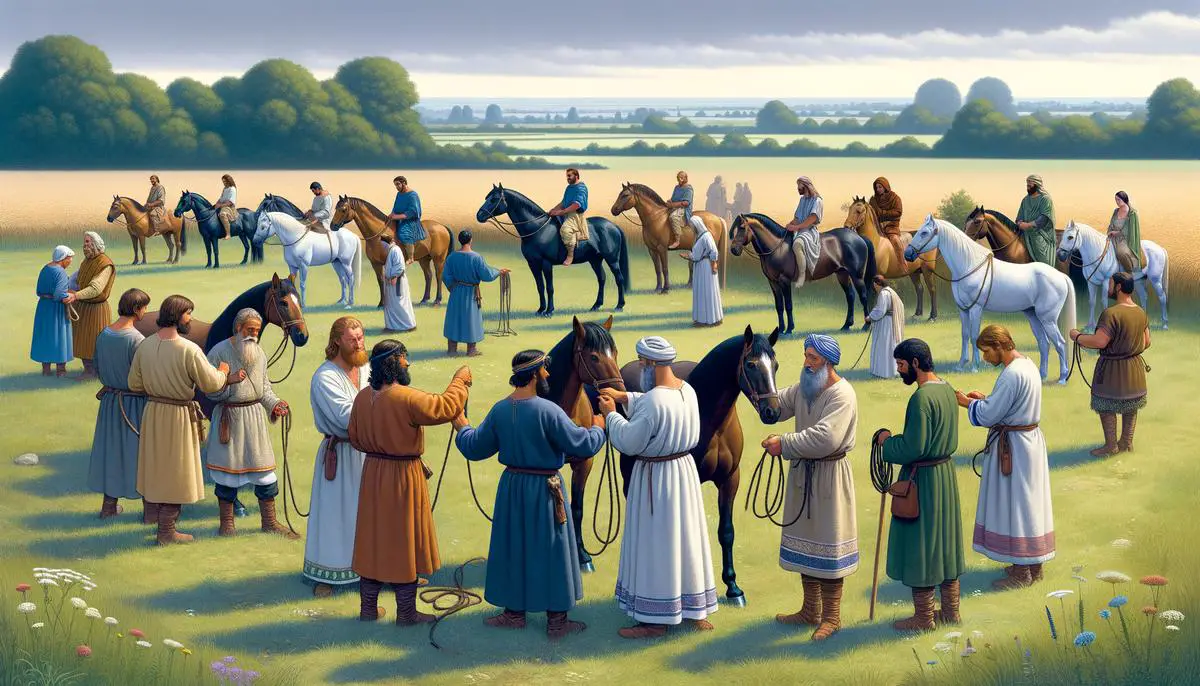From the early days of domestication to their prominent role in contemporary French culture, horses have played a pivotal part in shaping the history and society of France. This exploration seeks to uncover the multifaceted ways in which these majestic animals have influenced various aspects of life, from warfare and agriculture to sports and therapy. As we delve into the historical and modern significance of horses in France, we aim to provide a comprehensive view of their enduring legacy.
Table of Contents (Horspedia)
Origins of Horse Domestication in France
The domestication of horses revolutionized early French society in profound ways, shaping everything from agriculture to warfare, and even influencing social structures and trade networks.
Let’s start with warfare. The introduction of horses into battle tactics granted speed and mobility previously unimaginable. This wasn’t just a matter of being able to move troops faster; it transformed the very nature of warfare. Cavalry units could strike with swift precision, outflanking and overwhelming slower-moving infantry units. Horses became symbols of military prowess and were integral to the expansion and defense of territories.
Agriculture saw a notable shift with horse domestication. Horses pulled plows faster and more efficiently than oxen, which had been the primary draft animal. This increase in efficiency not only boosted crop yields but also allowed for the cultivation of greater land areas. As a result, societies could sustain larger populations, fueling growth and development. The horse’s role in farming was a game-changer, enabling the establishment of surplus food reserves which, in turn, supported denser populations and complex societies.
Economically, horses opened new avenues for trade by facilitating quicker and more reliable transport of goods. The ability to move products over long distances without spoilage catalyzed the emergence of far-reaching trade networks. This interconnectivity spurred cultural exchanges and economic growth, knitting disparate regions into a more cohesive economic unit.
Socially, horses became markers of status and power. Ownership of horses, especially multiple horses, signified wealth and social standing. The elite’s monopoly on horseback riding further entrenched social hierarchies, as those with access to horses could assert dominance over large swathes of territory. Additionally, the care and breeding of horses became specialized skills, valued and sought after in society, further influencing social stratification.
Spiritually and culturally, horses transcended their practical roles, featuring prominently in rituals, art, and mythology. They became symbols of nobility, strength, and freedom, deeply ingrained in the cultural fabric of early French society.
In essence, the domestication of horses in early French society was not simply about having a new means of transportation or a more efficient way to plow fields. It was a transformational force that reshaped military tactics, farming practices, economic structures, social hierarchies, and cultural expressions. From the speed of warfare to the spread of ideas, the influence of horse domestication is woven through the tapestry of French history, leaving a legacy that extends far beyond the fields and battlefields of yesteryears.
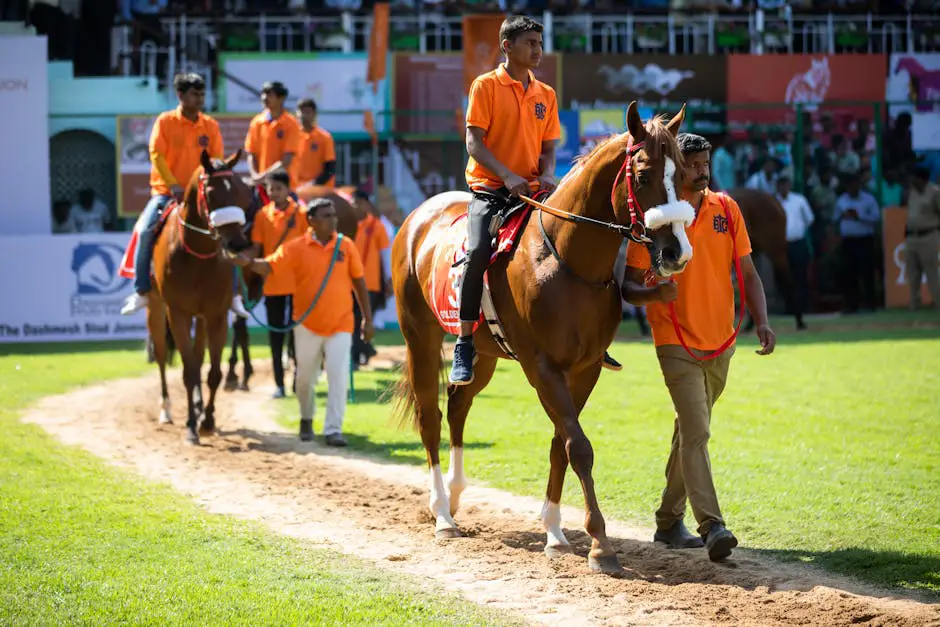
Horses in French Medieval Era
In medieval France, horses weren’t just beasts of burden or pawns in the theater of war; they held a pivotal position in the fabric of chivalric culture. The very concept of chivalry, with its emphasis on gallantry, martial prowess, and honor, was intertwined with horsemanship. The horse was not merely a tool for the knight but a reflection of his social standing, his martial skill, and, by extension, his chivalry.
The knighthood ceremony, an event marking the transition from squire to knight, often underscored the horse’s significance. A new knight would be presented with a sword and a pair of spurs, symbols of his new status, and then ceremonially placed on a horse. This act wasn’t just for pomp and circumstance; it symbolized the knight’s readiness to serve his lord and protect the realm, riding into battle if need be. The horse, thus, was not only a companion in arms but also a key player in the ceremonial rites that defined medieval chivalry.
Tournaments, too, were a showcase for the knight and his steed. Jousting, the most iconic of medieval sports, placed the horse at the center of the action. A knight’s ability to control his horse, maintain balance, and charge with precision toward his opponent was as crucial as his skill with the lance. Success in the tilt yard enhanced a knight’s reputation, bringing honor not just to himself but also to his family. The horse, decked in the colors and coat of arms of its rider, became a living emblem of the knight’s valor and chivalric identity.
Beyond the battlefield and tournament grounds, horses played a role in the everyday aspects of chivalric life. The act of riding was not simply a means of travel but a display of sophistication and grace. Knights were expected to excel in “haute ecole” – the high school of riding, where they and their horses performed complex maneuvers and steps. This skill was not only practical for maneuvering in battle but was also a form of entertainment and a demonstration of the knight’s control over his powerful and spirited companion.
The relationship between a knight and his horse went beyond the utilitarian. Chroniclers and poets of the time often emphasized the bond between the two, imbuing it with almost romantic undertones. The horse was seen as a loyal and noble companion, one that shared in the knight’s quests and adventures. Stories of knights speaking to their horses, grieving for them, or even being saved by them in times of peril are common in medieval literature, highlighting the deep connection that was believed to exist between them.
In essence, horses were central to the culture of chivalry in medieval France, not just as tools of war or symbols of status but as partners in the chivalric ideal. They were integral to the ceremonies, sports, and daily life that defined knighthood. Through their strength, loyalty, and grace, horses embodied the virtues of chivalry itself, reinforcing the values of courage, honor, and excellence that knights aspired to. The bond between knight and horse was more than just practicality; it was a profound connection that underscored the very essence of what it meant to be a knight in medieval France.
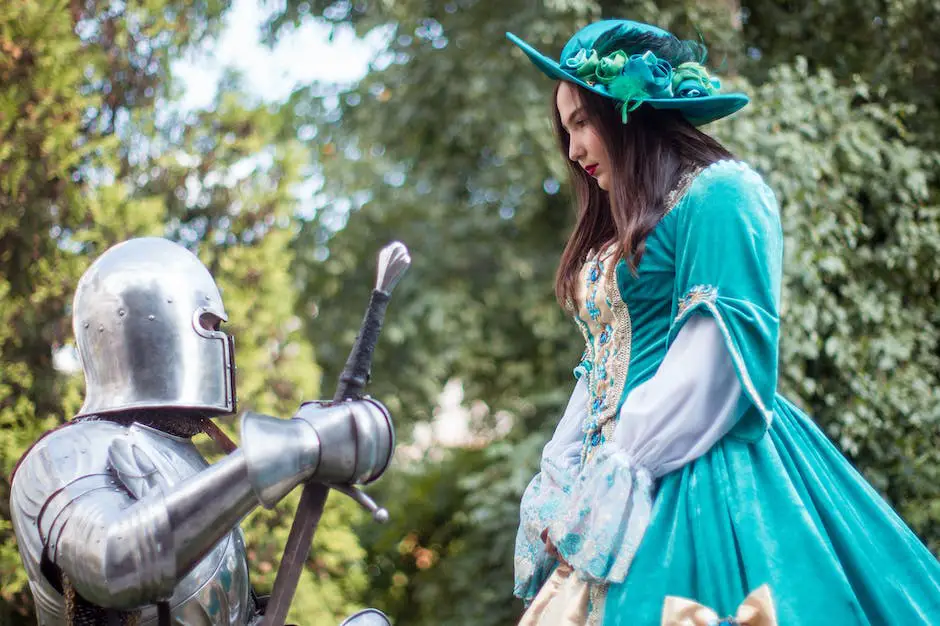
The Evolution of French Horse Breeding
The evolution of French horse breeding, which has led to some of the world’s most acclaimed equine specimens, is a tale intricately woven into the fabric of the nation’s history, heritage, and heart. While warfare, agriculture, and chivalric culture played foundational roles in shaping the need for powerful, resilient horses, the narrative of breeding extends to address the nuanced demands of modernity, from racing to leisure riding.
Initially, the shift toward specialized breeding practices can be traced back to the monarchy’s influence. French royals and nobles, with their unquenchable thirst for grandeur and prestige, were relentless in their endeavor to cultivate horses that were not just beasts of burden but paragons of beauty and elegance. The establishment of royal studs under the aegis of King Louis XIV marked a pivotal moment. These studs were not merely facilities; they were the crucible where the art of breeding was refined, blending science, strategy, and a smidgen of serendipity to produce horses that were as regal in appearance as they were robust in constitution.
As France galloped into the industrial age, the needs from a horse began to diversify. The notion that one breed could suffice for carriage, war, agriculture, and sport dissolved. This period saw a spirited surge in selective breeding. Each breed began to be honed for a particular purpose — the sleek and speedy Thoroughbreds for racing, the muscular and imposing Percherons for labor, and the nimble and spirited Selle Français for sport and show jumping.
The science of genetics began to play a more pronounced role in breeding practices in the 20th century. Breeders became students of heredity, applying Mendelian principles to predict and procure desired traits. This scientific approach has been a double-edged sword; while it has allowed for the creation of horses with exemplary characteristics, it has also raised concerns about genetic diversity and the risks associated with inbreeding.
French breeders have also been pioneers in recognizing the value of the mare in the breeding equation. Historically, stallions were the stars of the show, with mares often relegated to secondary roles. However, French breeding programs have emphasized the mare’s equal importance, focusing on maternal lines and the impact of the dam on a foal’s qualities. This balanced approach acknowledges that excellence is not the providence of the sire alone.
Internationalization has become a recent trend in the French breeding world, a response to globalization and the increasing demand for top-tier horses across the globe. French breeds have been exported, and foreign breeds have been imported, creating a vibrant mosaic of equine genetics. This cross-pollination has enriched France’s equine population but also introduced challenges, including maintaining breed standards and adapting to international competition.
In summation, the journey of French horse breeding from its royal roots to its current global stance is a testament to France’s enduring love affair with horses. This journey is characterized by an evolution from broad, utilitarian use toward specialized excellence, driven by science, shaped by societal needs, and studded with international accolades. Through careful stewardship and keen innovation, France has not only preserved its equine heritage but has also sprinted ahead, ensuring its breeds remain relevant, revered, and, above all, renowned worldwide.
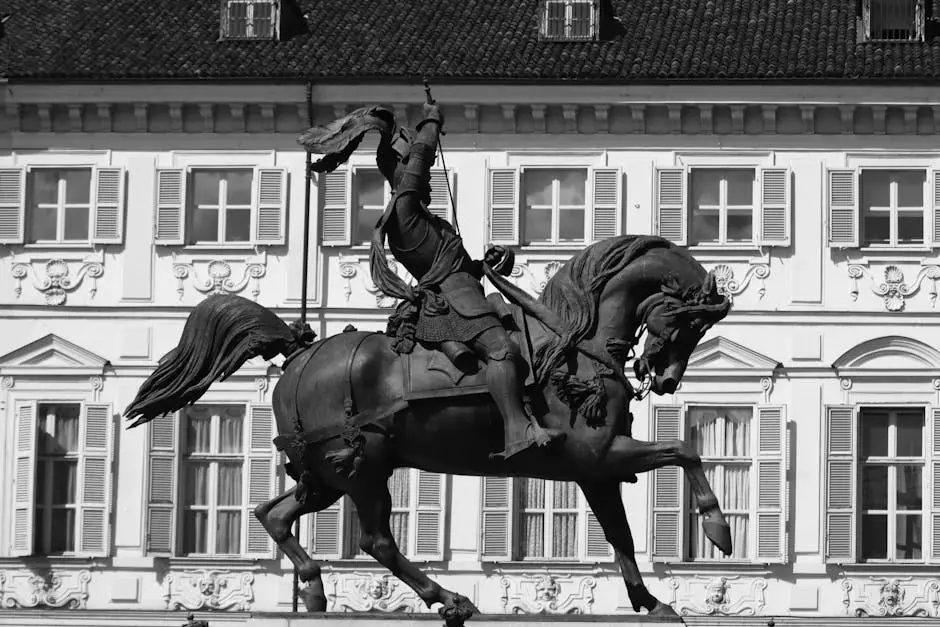
Horses in Contemporary French Culture
In the tapestry of modern French culture and society, horses gallop beyond historical chapters, weaving into contemporary life with noteworthy presence and significance. This connection, far from fading into the annals of history, thrives in various facets of today’s France — from sports and entertainment to eco-tourism and therapeutic practices. The relationship between the French and these majestic animals reveals a narrative of evolution, respect, and profound influence.
Sporting Excellence and Prestige
: The sphere of sports showcases horses in their most glamorous and competitive form. Horse racing, show jumping, and dressage hold a prestigious spot in French society. The Prix de l’Arc de Triomphe, hosted at the Longchamp Racecourse in Paris, stands as one of the most celebrated horse racing events globally, drawing crowds and bettors from around the world. Likewise, the French knack for producing world-class show jumpers and dressage riders underscores the nation’s deep-rooted equestrian tradition, a testament to the enduring bond between the French and their equine companions.Entertainment and Cultural Festivals
: Beyond the competitive arenas, horses enchant and entertain in circuses, historical reenactments, and festivals across France. The Cadre Noir of Saumur and its spellbinding displays of classical dressage capture the essence of harmony between rider and horse, a spectacle that draws tourists and equestrian enthusiasts alike. Similarly, the annual medieval festival in Provins provides a living tableau of knightly jousts, with horses at the center of these historical reenactments, breathing life into the pages of history for the modern spectator.Eco-Tourism and Natural Connection
: In the lush landscapes of rural France, horses serve as ambassadors to nature, offering a sustainable way to explore the countryside. Horseback riding tours in areas like Camargue — with its iconic white horses — allow visitors to connect with the natural world in a profound, environmentally friendly manner. This facet of French society speaks to a growing awareness of and desire for eco-conscious travel options, with horses playing a pivotal role in such experiences.Therapeutic and Educational Roles
: The therapeutic benefits of equine interaction find recognition and application in various French institutions and programs. Equine-assisted therapy helps individuals with physical and mental challenges, leveraging the calming presence of horses to facilitate healing and personal growth. Schools and special education programs increasingly incorporate equine therapy, acknowledging the unique bond between humans and horses as a catalyst for emotional and physical rehabilitation.Preservation of Heritage
: The dedication to preserving and celebrating horse breeds unique to France — such as the Percheron and the Camargue — mirrors a broader commitment to cultural and genetic diversity. These efforts ensure that future generations will inherit a rich equestrian heritage, showcasing the French commitment to their equine companions not just as relics of the past but as vibrant, living symbols of their culture. In modern France, horses symbolize a blend of tradition and progress, embodying the nation’s historical legacy while adapting to contemporary societal values. Whether through sports, entertainment, or eco-tourism, the influence of horses in French culture and society is undeniable, proving that the connection between humans and horses is as dynamic and enduring as ever.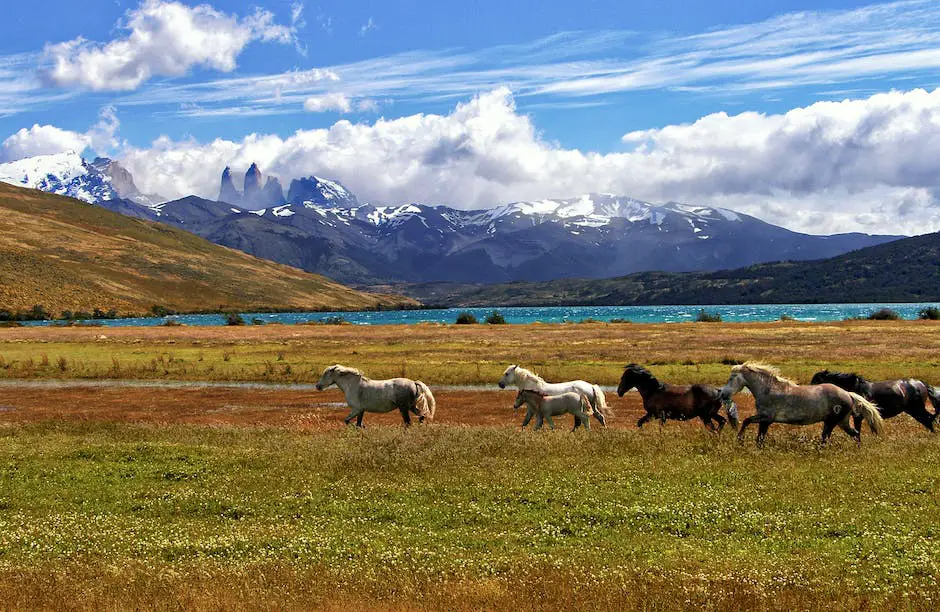
As we reflect on the profound influence of horses throughout French history to modern times, it becomes clear that these creatures are more than mere animals; they are intrinsic to the fabric of French culture and identity. Through their contributions to society, economy, and culture, horses have woven a narrative of progress, resilience, and innovation. As symbols of both tradition and evolution, they continue to inspire and shape the future, underscoring the timeless bond between humans and horses. This enduring relationship highlights the significant, ongoing role horses play in enriching human life, making their story an integral part of France’s legacy.
